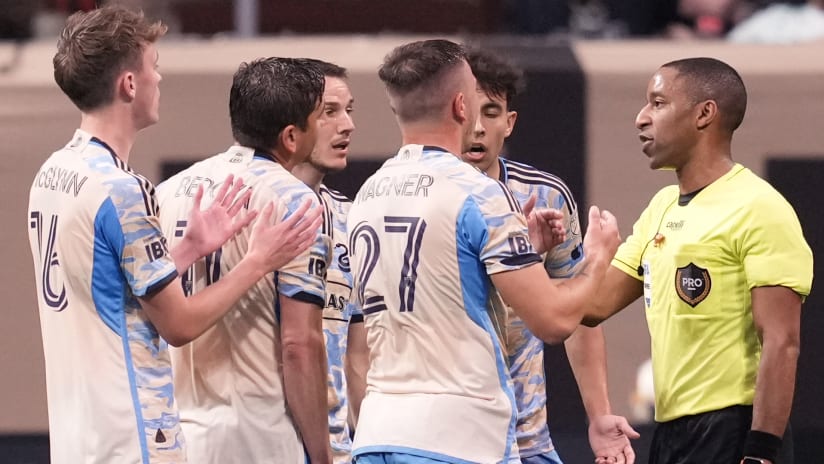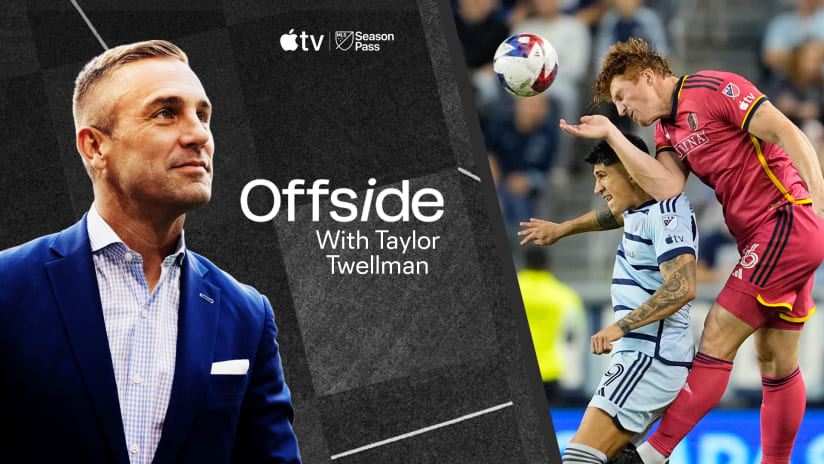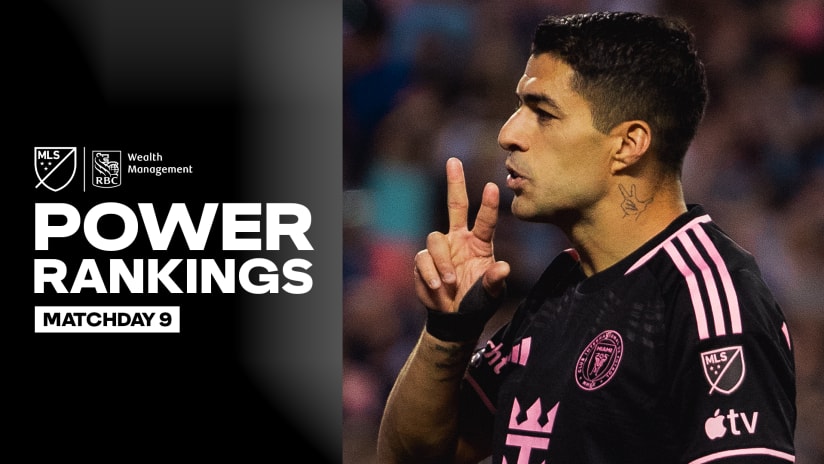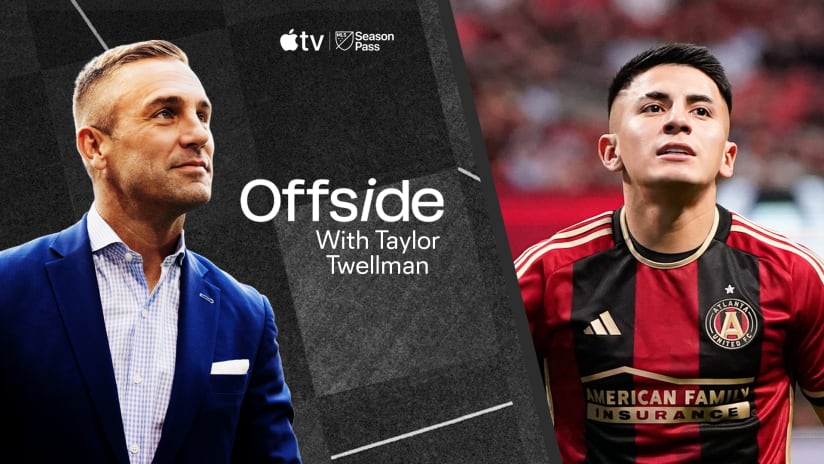FC Dallas are on the verge of lifting their second trophy this season, but that doesn't mean it's all smiles in Frisco.
Their dramatic win last weekend against the Seattle Sounders pushed them one step closer to the Supporters’ Shield, but also cost them their playmaker Mauro Diaz. Losing a star on the eve of the playoffs is not the ideal blueprint for a championship run, but all might not be lost.
When Diaz plays, the Dallas attack runs through him. He has the fourth-most assists in regular season action of any player since the start of the 2015 season and he has created 58 more chances than any other FC Dallas player during that time. When Diaz takes the field, Dallas plays a 4-2-3-1 that clearly relies on him to shoulder the creative burden in a No. 10 role.
This season, Dallas won three times in nine games without Diaz, and looking at those games can give us a hint of how they might play. In all three wins Oscar Pareja used a 4-4-2 shape where no one player was expected to shoulder the creative burden. Pareja wisely decided to change the way his team played, as opposed to asking someone to imitate an irreplaceable talent. Two of these wins came on turf, which is interesting for a team that has been eliminated in a series on turf in both of the last two seasons (and lost on turf in Seattle despite advancing in the series last year).
Taking a look at their 4-2 win in New England shows us why Dallas fans can still be hopeful. They started with Tesho Akindele and Michael Barrios as the forward duo and Fabian Castillo and Ryan Hollingshead as the two wide attackers. Without Diaz, Dallas often played a more direct passing style that bypassed the midfield buildup. Take a look at Carlos Gruezo’s quick regain and ball over the top for Barrios:
The penalty gave Dallas an early lead, but also cost them Barrios to injury. Pareja responded by putting Kellyn Acosta into the game and switching to a 4-3-3 until New England came back to take a 2-1 lead. Dallas then moved back to a 4-4-2 with Castillo and Akindele together up top, Hollingshead on the left and Acosta on the right. Acosta also took set pieces once he came on, including an assist for the equalizer, and displayed his versatility in this game, allowing Dallas to change their shape multiple times.
The US national team player should be healthy for the Audi 2016 MLS Cup Playoffs and he is one of several players who can play more than one role in a 4-4-2. Dallas now has the flexibility to adjust to both their opponent and the circumstances, a luxury that a team with a defined No. 10 does not always have.
Another versatile player is Akindele. In the New England game, he started at forward and provided a target for long Dallas passes, while also showing the ability to drop deeper and create. Here we see him assuming an almost No. 10 position and releasing an overlapping Harris down the right that resulted in a FC Dallas corner:
Later in the game, Akindele scores his second after some excellent "target man" play. In another Dallas win without Diaz against Portland on April 13, Akindele was listed as the center forward, but actually played as a wide midfielder most of the time while Urruti and Castillo wreaked havoc up top.
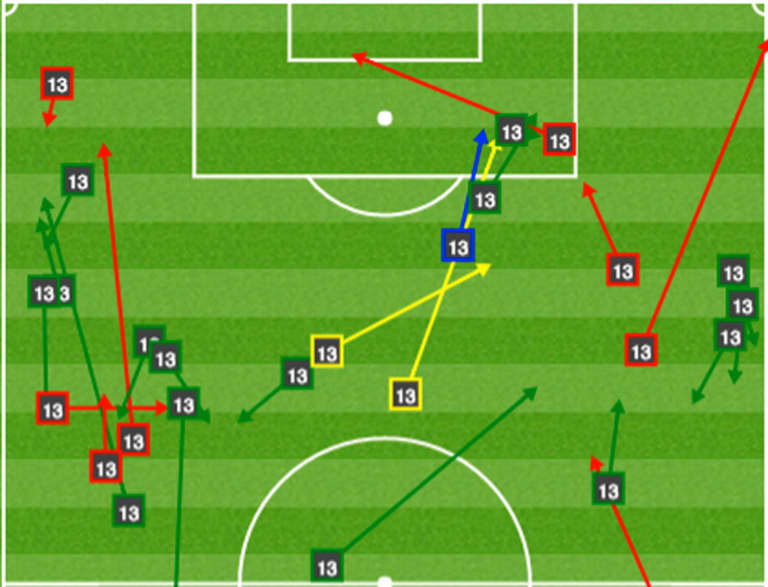
Green arrows represent successful passes, red arrows represent unsuccessful passes, yellow arrows represent chances created and the blue arrow represents an assist.
His passing map shows he mostly played down the right and left, but there was also a moment of transition playmaking that underscores just how varied his skill set is:
Akindele is able to rapidly run with the ball over almost two thirds of the field while under serious pressure and create for Castillo. With Diaz out, I would expect Akindele and Urruti to start together at forward. In that same Portland game, the pair showed a fine ability to pressure and then combine from central areas. With all due respect to Diaz, one MLS's elite playmakers, it is difficult to imagine such swarming defending when he is playing in a central role.
If it is Urruti and Akindele up front, Dallas can pick two from Barrios, Hollingshead and Acosta for the wide positions. Barrios and Hollingshead have both also played parts of games as central forwards when Dallas is playing a 4-4-2. Pareja has already displayed his ability to read the game and move these pieces around as he sees fit. It is an advantage for Dallas that their opposition will not know who is going to play where
While Dallas will miss Diaz’s creativity in midfield and zone 14, they can also bypass that area and play another way. In their wins without Diaz, they showed how strong they can be in the air. Check out how they performed in their three wins without Diaz.
Opponent |
Date |
Aerials won |
Aerials attempted |
|---|---|---|---|
Portland |
4/13 |
22 |
35 |
Sporting KC |
4/17 |
18 |
29 |
New England |
5/21 |
23 |
40 |
Throughout the season they averaged 28 aerials contested, winning 16 of them. This would seem to indicate the ball is in the air more often, and a possible style change from FC Dallas. Is a beefed-up team that plays a vertical game better suited to the physicality of the playoffs than a team that relies on one playmaker the entire time?
Let’s not forget that FC Dallas also has another Mauro, who has proven he can come off the bench and impact a game, as well as Carlos Ruiz. Ruiz showed how lethal he can be last Sunday, when he scored the game-winner against Seattle. He is one of the most clutch performers in MLS history and Pareja knows he can turn to “El Pescadito” if he needs a goal.
Also consider a key factor in Dallas’ success this season, their defense. The club has found a back four that appears primed to thrive in the playoffs. Maynor Figueroa, Matt Hedges, Walker Zimmerman and Atiba Harris have started 12 games together, and Dallas conceded just 0.9 goals per game in those matches.
All four of their preferred defenders have size and play physically, both of which come in handy in October and November. Dallas have conceded the fifth-fewest goals in MLS, which speaks to a commitment to defending that extends beyond the back four. In Gruezo, Dallas has another player committed to a strong defensive shape. In his 25 starts, the team only conceded an average of 1.1 goals per game.
A deep bench, versatile attackers and an athletic defense that hasn’t conceded often means that not many teams will look forward to playing Dallas, even without one of the league’s very best players.
Matt Pavlich is a youth soccer coach in the New York City area who holds a NSCAA Advanced National badge. He is currently working with Asphalt Green Soccer Club on the girls side, and Martin Luther King high school on the boys side. He has worked for Opta since 2011, primarily focusing on MLS. He also played varsity soccer for Vassar College.





